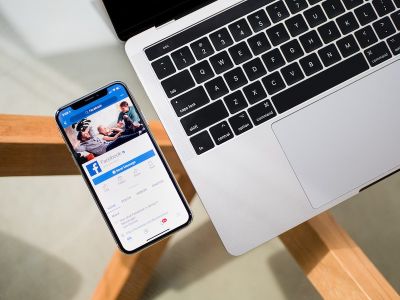The Outlook of Facebook today
Facebook remains the market leader, with nearly 3 billionmonthly active users, that is, a whopping 30% of the world population. YouTube and Instagram are closing behind, with 2.5 and 1.5 billion monthly active users respectively. TikTok, the new player that launched back in 2016, blew up during the pandemic and reached 1 billion monthly active users in a short period.
As each individual uses multiple platforms, there was also a major shift in platform usage and perceived benefits. Different sites serve different purposes. Knowing who is your target audience and which platforms they frequently use, would shape your digital marketing plan, and maximise outcomes.
Newsfeed Competition
Most people are used to the idea that social media is free, where simplistic original content has the potential to reach a vast majority of audiences without costs. Inevitably, as the newsfeed became more crowded, it is much more competitive to gain visibility.
There is an average of 1,500 posts that possibly appear each time a user logs onto Facebook. This number could even amount up to 15,000 stories if that user has a lot of friends and connections. It is simply too much information to display in one session. It is reasonable that paid content would be prioritised before organic content. If the stories rank lower in the newsfeed, it is most possibly not viewed.
It is also worth noting what type of content matters. It is analysed that video content is ranked higher and initiates more interaction than images. It is also reported that live videos are prioritised and usually appeared on top of the newsfeed.
Change of mission
Furthermore, Facebook has been trying to return to its original mission, to connect people and build communities based on meaningful interaction. As a result, Facebook has adjusted its algorithms to bring friends and families’ content back on top of the newsfeed. As much as these changes have made it difficult for marketers, it is reasonable for Facebook to review its tactics and serve its users better. In the long run, this means that users would be happier to continue using Facebook as their main social media diet and prevent them from switching to other sites.
The good news is, this does not mean that Facebook Marketing is dead. In this new age, Facebook wants marketers to consider it as a paid marketing channel, not a free broadcasting service, where everything works on the principles of trade-off. Marketers must also take Facebook users more seriously, as customers, rather than just “followers”. Every interaction counts, and any user could be a potential customer.
Previously, with organic content, businesses would have to figure out what their customers want and base their marketing strategy on it. This process is now almost completely automated, thanks to Facebook’s analytic tools. These mechanisms allow companies to pinpoint their target customers, and it would also drive traffic to your brands.
Cost-effective Marketing
Facebook is still one of the most cost-effective digital marketing channels. It is free to create pages, upload posts, and the price to run Ads is relatively low. This is extremely helpful for start-ups, small and local businesses. Promoting on Facebook would help a new brand to gain recognition quickly.
As people still join every day, Facebook Marketing would most definitely continue to prosper. It is a powerful tool; however, the best outcomes would require insightful strategies. Understanding how the Facebook algorithm works is the key to your success.
How you can use Facebook today
The most effective way seems to be mixing up paid and organic content. Without paid advertising, it is too competitive and can be unfeasible to gain visibility among millions of marketing stories. At the same time, seeing an ad repeatedly could bring a negative impression on the brand and the company. If the advertisement is high-quality enough, it can be more effective compared to those with a higher advertiser bid.
Try implementing more visual aids into your content. Images and videos attract more people and intrigue them to stay longer on the marketed content. Have you ever tried going live? Notice how followers are notified when a page they follow goes live. With every post, remember to track its performance, and know to distinguish between ‘soft’ metrics and ‘real’ metrics. For example, Likes, Comments, and Shares are good indicators of visibility and performance. However, marketers need to pay attention to the metrics that translate into their ultimate goal, whether it is enhancing brand awareness, improving conversion rate, or boosting revenue growth.
Last but not least, it is worth mentioning that social media channel requires a lot of individual-level connection. Be creative and get personal! Businesses can produce different versions of the marketing campaign and target different audience populations. Give the strategy a test and monitor it to see if your insights are correct. If not, there is still plenty of room for improvement.
Facebook is not a dying Marketing Channel, but it will require more comprehensive skills and knowledge. As users are using various platforms at the same time, it is best to utilise Facebook in combination with others. Always remember to align your theme on all mediums, with your missions and ultimate goals.
Thanks to Timothy Hales Bennett on Unsplash for the image!
Source link




